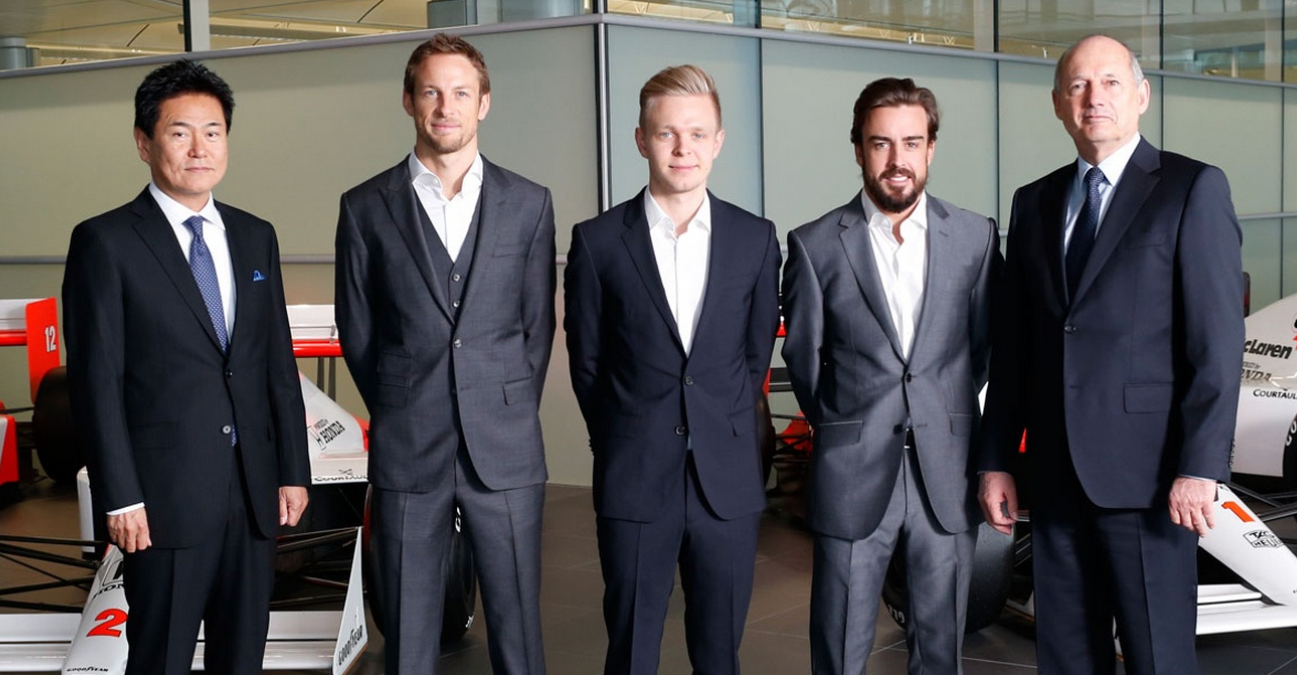
Admit it, you’ve probably never even checked the oil on your road car, right?
Even if you guiltily know that the oil might need a sneaky little check, we bet you’re still a bit reluctant to lift the bonnet, pull out that dipstick thing, wipe it clean with an old rag, re-insert it and measure your oil level.
In Formula 1, we have no such reservations – in fact, we love a bit of lube!
We’ll take more than 50 oil and lubricant samples from our Formula 1 cars during a grand prix weekend, a feat which provides us with more than 1000 points of analytical data – all because a clean, efficient and well-lubricated power unit is essential for performance.
But how do we do it?
Lifting the lid: testing and sampling our lubricants
McLaren’s Technology Partner ExxonMobil brings a mobile lab to each and every race – it’s operated by ExxonMobil Technical Advisor, Mike Frost.
Tuesday & Wednesday
Mike arrives at the racetrack on the Tuesday of race week, and spends Wednesday ensuring that all the fuel and Mobil 1 lubricant supplies have arrived – more than 2000 litres of Esso fuel are brought to each event – and that his on-site laboratory, the so-called ‘ExxonMobil Products Technology Laboratory’, is operational.
Thursday
On Thursday, the mechanics finish building up the two race cars. Ahead of Friday practice, Mike takes fuel samples from both the cars and opens the fuel drums to ensure they match the same chemical ‘fingerprint’ of the fuel that left the McLaren Technology Centre in Woking.
He also tests oil samples to ensure both the engine and gearbox are primed for efficiency and performance throughout the race weekend. Everything is calibrated for the days of actual running, when a test sample can be extracted, tested and classified within two or three minutes.
Friday
The cars run for two 90-minute practice sessions on Fridays, so Mike uses a gas chromatograph to test fuel samples before running starts to ensure the fuel is FIA compliant and uncontaminated.
All the fuels must match the ‘fingerprint’ file originally submitted to the FIA. Non-compliance can result in disqualification, and tolerances are tight: for example, something as simple as a mechanic taking the fuel pump out and washing it in an unauthorised solvent could result in a fingerprint spike that wouldn’t meet FIA tolerances.
During practice, Mike also takes oil samples after each run to accurately assess the condition of the engine. Mobil 1’s on-site laboratory can break the oil down into individual components, so the additives can be studied, but so too can the wear-metals – tiny particles of the engine (such as aluminium, iron, lead or copper) that mix with the oil during the combustion cycle.
The oil is microscopically inspected using a spectrometer, which measures down to individual parts per million. That means ExxonMobil’s engineers can pick out the 20-odd individual metals within the oil.
That data is used to accurately map the life of the engine: the engineers are looking for signs of degradation – the wear-metals showing signs of impending engine failure, or whether, for instance, a radiator blocked with debris has cooked the temperatures and caused terminal damage.
These predictive analytical tools have saved races for McLaren over the years!
Saturday
Mike runs more fuel and lubricant tests both before and during FP3, the one-hour Saturday morning practice session that allows teams to refine set-up and practice low-fuel qualifying simulation runs.
These samples are some of the most important of the weekend: the results give the team the clearest indication of the power unit’s health, and how hard the engines can be pushed during the race. They’ll also flag up any high friction or wear-points within the engine that can be addressed before Sunday.
Sunday
After the race, Mike begins work testing the various fuel and lubricant samples. After examining the fuel, Mike turns his attention to the car’s hydraulic oils, gearbox oils, and engine oils.
While he can achieve much working on-site, the oil is sent back to ExxonMobil’s headquarters in Paulsboro, New Jersey for a full analysis, with the results returned to the team a few days later.
What happens after the race?
After travelling back to the UK, Mike spends a further week liaising with Mobil 1 and Esso engineers and chemists, with Honda’s technicians, and with the mechanics and engineers at McLaren. After that, he’ll be replenishing stocks of consumables, and, if a new fuel blend is being introduced, will work with the mechanics to ensure the cars’ fuel systems are fully flushed.
After that, it’s time to board the plane and head off again.
Makes checking the oil in your own car seem a little easier now, eh?!?